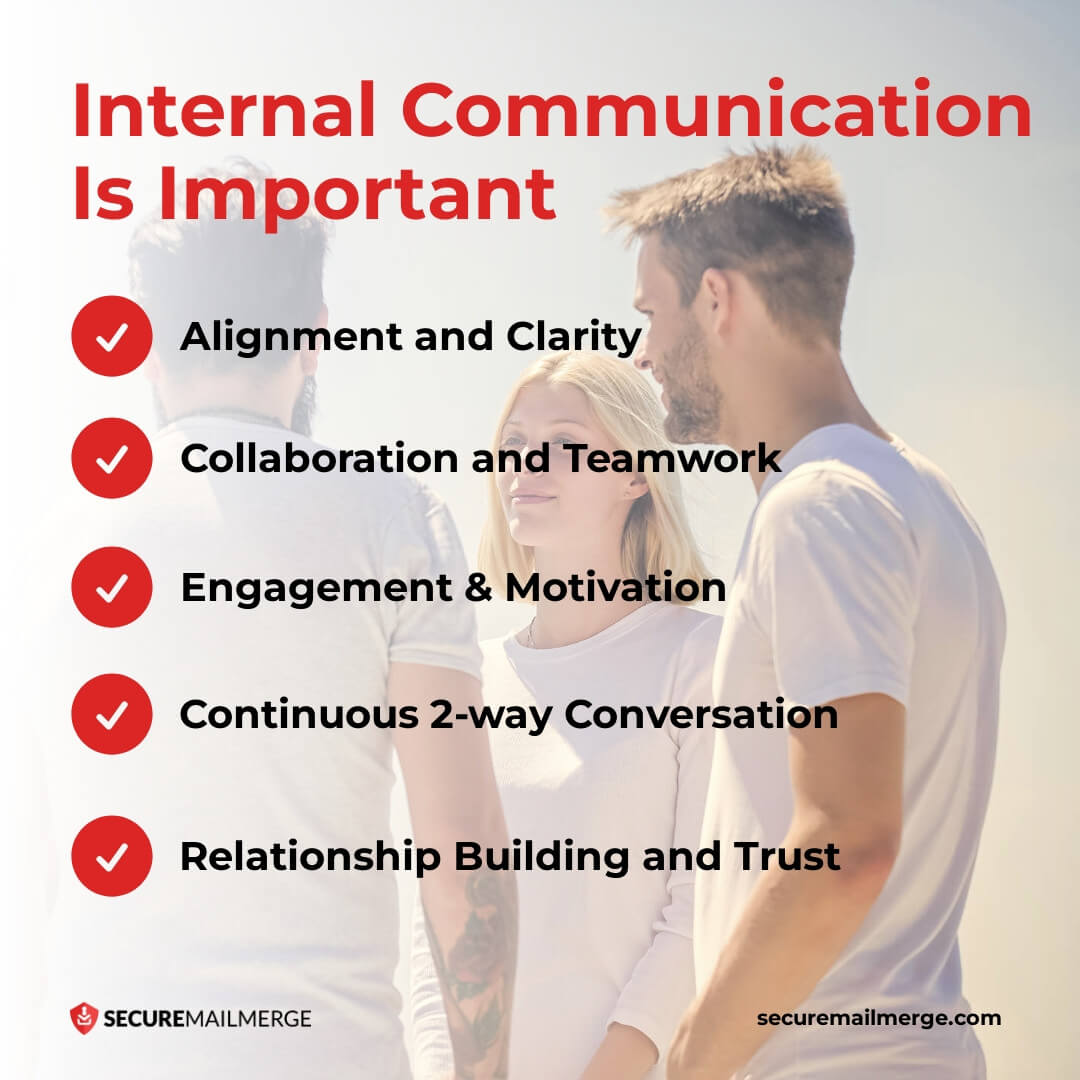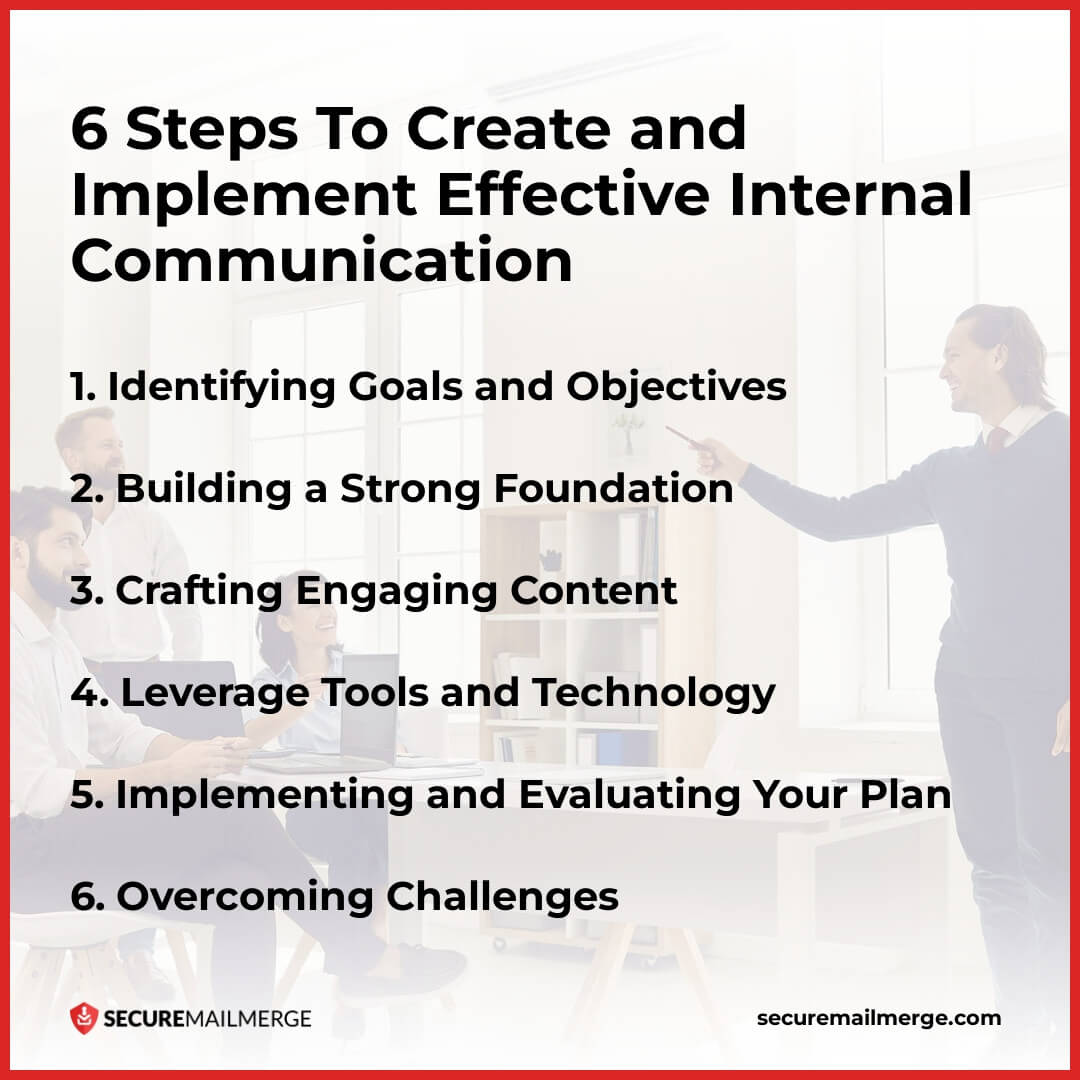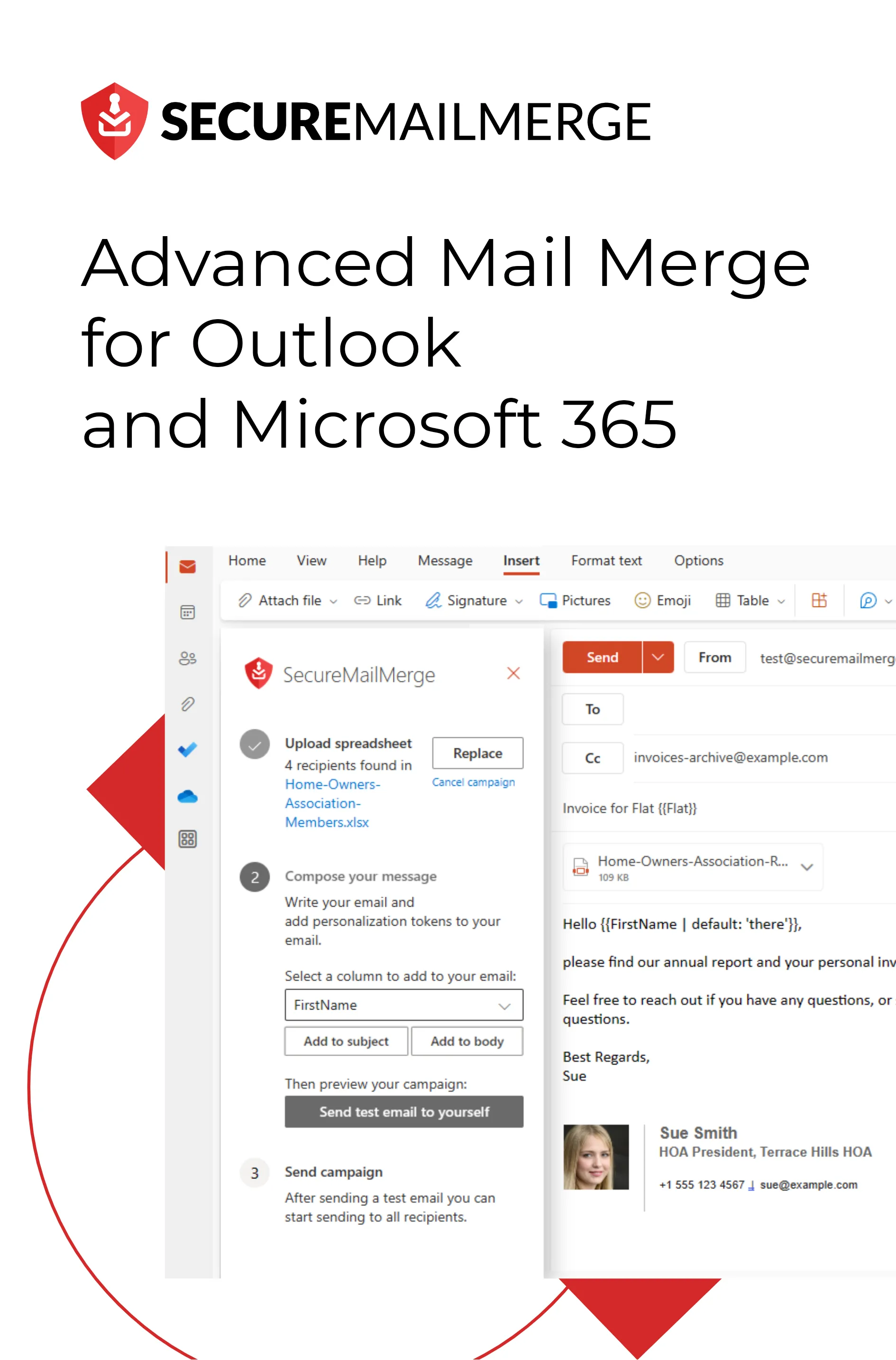Know how directly from the Microsoft 365 mail merge experts
Cómo Desarrollar Comunicaciones Internas Estratégicas Con Tu Equipo en 2023
En un mundo donde las reuniones virtuales reemplazan las salas de juntas y los mensajes instantáneos reemplazan las charlas junto a la máquina de agua, la necesidad de comunicaciones internas estratégicas nunca ha sido tan crítica.
Según encuestas recientes sobre comunicación empresarial, el 72% de los líderes empresariales creen que una comunicación efectiva aumenta la productividad de los empleados. En comparación, el 86% cree que los problemas de comunicación son la principal razón de los fracasos en el lugar de trabajo.
En este artículo, te llevaremos en un viaje a través del mundo en constante evolución de las comunicaciones internas estratégicas, equipándote con las herramientas, conocimientos y marcos necesarios para desarrollar una estrategia de comunicación que cambie las reglas del juego con tu equipo en 2023.
Desde entender el panorama actual y superar desafíos comunes hasta crear contenido atractivo y aprovechar las últimas herramientas de comunicación, profundizaremos en las estrategias que harán que tu equipo se destaque.
¡Así que vamos a sumergirnos!
Visión general de las Comunicaciones Internas Estratégicas
La pregunta importante es, ¿qué es una estrategia de comunicaciones internas después de todo?
La comunicación interna estratégica se refiere a un enfoque intencionado y planificado para la comunicación dentro de una organización o equipo.
Implica desarrollar una estrategia integral que alinee los esfuerzos de comunicación con los objetivos y metas de la organización. Un buen plan de comunicaciones internas tiene como objetivo fomentar la colaboración, mejorar el compromiso de los empleados y asegurar que los mensajes se transmitan de manera efectiva a todos los miembros del equipo.
Las organizaciones pueden crear una cultura de comunicación cohesiva y transparente al adoptar un enfoque estratégico, impulsando el compromiso de los empleados, promoviendo una comprensión compartida y logrando mejores resultados.
Entendiendo el Panorama Actual de las Comunicaciones Internas
En 2023, las comunicaciones internas han evolucionado significativamente, reflejando la dinámica cambiante del lugar de trabajo moderno.
Para desarrollar un enfoque estratégico, es crucial obtener información sobre el panorama actual de las comunicaciones internas, incluyendo las tendencias emergentes y los desafíos que enfrentan las organizaciones.
Las dos principales tendencias en todas las industrias son:
Compromiso de los Empleados y Personalización
Las organizaciones se centran cada vez más en mejorar el compromiso de los empleados a través de las comunicaciones internas. Esto incluye mensajes personalizados, contenido adaptado y estrategias de comunicación dirigidas para asegurar que los empleados se sientan valorados, escuchados y conectados.
Toma de Decisiones Basada en Datos
A medida que las comunicaciones internas se vuelven más sofisticadas, las organizaciones están aprovechando el análisis de datos para medir el impacto y la efectividad de sus estrategias de comunicación. Al recopilar y analizar datos sobre el compromiso, las tasas de participación y la retroalimentación, las organizaciones pueden tomar decisiones basadas en datos para optimizar sus esfuerzos de comunicaciones internas.
Por otro lado, el aumento del trabajo remoto y equipos híbridos ha remodelado significativamente el panorama de las comunicaciones internas e introducido nuevos desafíos:
Barreras de Comunicación
Las barreras de comunicación surgen cuando los miembros del equipo están distribuidos en diferentes zonas horarias y ubicaciones físicas. Los retrasos en el tiempo, los desafíos tecnológicos y la falta de interacciones cara a cara pueden obstaculizar la comunicación efectiva y crear desalineación en el equipo.
Reforzando la Cultura de la Empresa
Mantener una cultura empresarial sólida se vuelve un desafío cuando los miembros del equipo están físicamente separados. Las comunicaciones internas juegan un papel crucial en reforzar los valores de la organización, fomentar un sentido de pertenencia y mantener a los empleados conectados con la misión y visión más amplias de la empresa.
Equilibrando la Comunicación Formal e Informal
Las organizaciones deben crear oportunidades para la comunicación informal, ya sea a través de pausas para café virtuales, canales informales en plataformas de colaboración o eventos sociales dedicados, para fomentar la cohesión del equipo y construir relaciones.
5 Razones por las que la Comunicación Interna Efectiva es Importante

Casi todas las empresas líderes dependen de una buena comunicación interna para tener éxito.
Así que exploremos las razones clave por las que las comunicaciones internas son de suma importancia para alcanzar los objetivos del equipo con algunos ejemplos de comunicaciones internas:
1. Alineación y Claridad
Al proporcionar mensajes claros y consistentes, los objetivos y prioridades del equipo se comunican de manera transparente, minimizando malentendidos y confusiones.
Cuando todos entienden su papel y cómo contribuye a los objetivos más amplios, se mejora la sinergia y la coordinación dentro del equipo.
2. Colaboración y Trabajo en Equipo
Actualizaciones regulares, informes de progreso y el intercambio de información permiten a los miembros del equipo entender el avance de varios proyectos, identificar dependencias y colaborar de manera efectiva. Esto conduce a una mejor resolución de problemas, innovación y mayor productividad.
3. Compromiso y Motivación de los Empleados
Cuando los miembros del equipo se sienten informados e involucrados en la toma de decisiones, desarrollan un sentido de pertenencia y compromiso con los objetivos del equipo.
Al reconocer logros y buscar opiniones y retroalimentación, las comunicaciones internas contribuyen a una cultura laboral positiva e inclusiva, fomentando un mayor compromiso y motivación.
4. Conversación Continua Bidireccional
La comunicación bidireccional y un bucle de retroalimentación son cruciales para la mejora continua y el crecimiento. Al buscar activamente opiniones, las organizaciones pueden identificar áreas de mejora, tomar decisiones informadas y fomentar la innovación.
Esto fomenta una cultura de aprendizaje y mejora continua dentro del equipo, impulsándolos hacia niveles de rendimiento más altos.
5. Construcción de Relaciones y Confianza
La confianza es la base para un trabajo en equipo efectivo y permite a los equipos superar desafíos, resolver conflictos y alcanzar objetivos comunes. Los planes de comunicación interna construyen relaciones sólidas y fomentan la confianza entre los miembros del equipo.
El Marco Definitivo para Definir Tu Estrategia de Comunicación Interna

Todos los beneficios y la necesidad absoluta de una estrategia de comunicación interna parecen demasiado buenos para dejarlos pasar. Pero el proceso de desarrollar comunicaciones internas también parece abrumador.
No te preocupes; estamos a punto de compartir nuestra propia plantilla de plan de comunicación interna que puedes seguir con consejos, herramientas y ejemplos.
1. Identificando Metas y Objetivos de Comunicación
El primer paso para definir tu estrategia de comunicación interna es identificar tus metas y objetivos de comunicación. Las metas y los objetivos tienen definiciones diferentes, así que asegúrate de distinguirlos.
Puedes hacer esto de varias maneras, pero nos gusta adoptar un enfoque probado para aprovecharlo al máximo:
- Determina qué quieres lograr a través de la comunicación interna y haz las preguntas necesarias. ¿Es mejorar la colaboración del equipo, alinear a los empleados con los valores de la empresa o aumentar el compromiso de los empleados?
- Establece metas específicas, medibles, alcanzables, relevantes y con un límite de tiempo (SMART) para guiar tus esfuerzos de comunicación.
- Realiza encuestas, entrevistas o grupos focales para recopilar comentarios de los miembros del equipo sobre sus necesidades y preferencias de comunicación.
- Analiza los esfuerzos de comunicación pasados y su impacto para identificar áreas de mejora y asegurarte de que tus metas de comunicación estén alineadas con los objetivos generales de la organización o del equipo.
Aquí tienes un ejemplo:
Meta: Aumentar la colaboración y el intercambio de conocimientos entre los miembros del equipo.
Objetivo: Implementar una plataforma de colaboración para todo el equipo que facilite la comunicación en tiempo real, el intercambio de documentos y las actualizaciones de proyectos.
2. Construyendo una Base Sólida para las Comunicaciones Internas
Crear una base sólida es crucial para una comunicación interna efectiva. Este paso implica establecer una cultura de transparencia, confianza y comunicación abierta dentro del equipo. Aquí es donde:
- Fomentas la comunicación abierta, la escucha activa y la retroalimentación.
- Desarrollas un marco de mensajes claro y consistente para asegurar que los mensajes críticos se transmitan de manera efectiva a todos los miembros del equipo.
- Eliges los canales y herramientas de comunicación adecuados que se adapten a las necesidades y preferencias de tu equipo.
- Aseguras la accesibilidad e inclusión en tus prácticas de comunicación para atender a audiencias diversas.
Ejemplo:
Implementa reuniones regulares del equipo, asambleas o pausas para café virtuales para fomentar un diálogo abierto y construir confianza dentro del equipo. O establece un nuevo canal de Slack, plataforma social o página para interacciones entre empleados.
Últimas herramientas:
Yammer de Microsoft: Una plataforma de redes sociales para comunicación y colaboración interna.
Workplace de Meta: Una plataforma de comunicación y colaboración que facilita la comunicación transparente y abierta dentro de las organizaciones.
3. Creando Contenido de Comunicación Interna Atractivo
¿Quién dice que la comunicación interna no puede ser divertida?
Así como tienes tu voz de marca para el marketing externo, también necesitas una voz en tu contenido para hacerlo atractivo y representar tu cultura laboral para el equipo.
Para captar la atención, prueba estos métodos:
- Adapta tus mensajes a diferentes equipos y estilos de comunicación. Comprende sus preferencias, necesidades y tipo de trabajo para comunicar tu mensaje de manera efectiva.
- Utiliza técnicas de narración para hacer que tu comunicación sea más relatable, impactante y memorable.
- Para aumentar el compromiso, incorpora elementos visuales y multimedia, como videos, infografías o presentaciones interactivas. (especialmente si se trata de retroalimentación mensual, sesiones de capacitación, informes de progreso o enlaces a cursos en línea)
Ejemplo:
Utiliza estudios de caso o historias de éxito para resaltar el impacto de los miembros individuales del equipo y sus contribuciones a los objetivos generales. Aún mejor si estableces un boletín para empleados para compartir logros, recursos e historias divertidas entre todos los equipos.
O, en lugar de enviar un correo electrónico extenso, crea un breve mensaje en video del líder del equipo para compartir actualizaciones e información importante.
Últimas herramientas:
Canva: Una plataforma de diseño gráfico que te permite crear imágenes visualmente atractivas, banners de correo electrónico, infografías, presentaciones y más.
Loom: Una herramienta de mensajería en video que te permite grabar y compartir mensajes en video con tu equipo para obtener retroalimentación sobre el trabajo u otros asuntos.
4. Aprovechando Herramientas y Tecnología de Comunicación Interna
La tecnología juega un papel crucial en la habilitación de comunicaciones internas efectivas. Al igual que todas las herramientas que hemos mencionado anteriormente, puedes utilizar innumerables aplicaciones y complementos para campañas de correo electrónico dentro de tu organización para automatizar tareas.
- Explora plataformas y herramientas de comunicación interna que ofrezcan características como colaboración en equipo, intercambio de documentos y mensajería instantánea.
- Integra software de colaboración y gestión de proyectos para optimizar los procesos de comunicación y mejorar la productividad.
- Utiliza herramientas de automatización e IA para automatizar tareas repetitivas, como programar actualizaciones o enviar notificaciones.
- Asegura la privacidad y seguridad de los datos para proteger la información sensible compartida dentro de tu equipo.
Ejemplo:
Utiliza software de gestión de proyectos como Asana o Trello para asignar tareas, hacer seguimiento del progreso y comunicar actualizaciones de proyectos en una plataforma centralizada.
Algunas otras herramientas populares incluyen:
Miro: Una herramienta de pizarra en línea colaborativa que permite a los equipos visualizar y colaborar en ideas, proyectos y procesos.
Monday.com: Una plataforma de gestión de proyectos y colaboración que ofrece flujos de trabajo personalizables, gestión de tareas y características de comunicación del equipo.
5. Implementando y Evaluando Tu Plan de Comunicación Interna
Una vez que hayas definido tu estrategia, es crucial implementarla de manera efectiva y evaluar continuamente su efectividad. La implementación parece fácil si sigues los ejemplos anteriores, pero ¿qué pasa con la evaluación?
Bueno, al igual que cualquier otro análisis, hay métricas y datos que puedes recopilar sobre cómo están desempeñándose tus empleados con el nuevo marco.
Hacemos esto mediante:
- Desplegar el plan de comunicación al equipo y asegurarte de que todos conozcan los objetivos, canales y expectativas.
- Monitorear y evaluar la efectividad de tus iniciativas de comunicación interna a través de KPIs y métricas como tasas de compromiso, encuestas de retroalimentación o análisis de comunicación.
- Hacer ajustes y mejoras basadas en comentarios e información de datos.
Ejemplo:
Crea un plan de comunicación detallado y un cronograma para guiar el proceso de implementación. Y realiza encuestas regulares o sesiones de retroalimentación para recopilar información sobre la efectividad de los esfuerzos de comunicación e identificar áreas de mejora.
Si bien este también puede ser un proceso manual, puedes usar estas herramientas también:
SurveyMonkey: Una herramienta de encuestas en línea popular que te permite crear y distribuir encuestas para recopilar comentarios de los miembros del equipo.
Firstup: Una herramienta de seguimiento que proporciona análisis de compromiso para la comunicación interna y actúa como una plataforma de publicación de información de arriba hacia abajo.
6. Superando Desafíos Comunes en las Comunicaciones Internas
Siempre habrá desafíos, incluso con un marco establecido, preciso y probado. Todos los equipos son únicos y tus empleados tienen diferentes necesidades.
Puedes tomar algunos pasos cruciales para asegurarte de que todo esté funcionando sin problemas:
- Aborda las brechas y barreras de comunicación promoviendo canales de comunicación transparentes y abiertos.
- Maneja conflictos y resuelve malentendidos de manera oportuna para mantener un ambiente de trabajo positivo y colaborativo.
- Maneja la resistencia al cambio en las prácticas de comunicación comunicando efectivamente los beneficios e involucrando a los miembros del equipo en la toma de decisiones.
- Fomenta una cultura de mejora continua alentando la retroalimentación, aprendiendo de los errores y adaptando tus estrategias de comunicación en consecuencia.
Ejemplo:
Proporciona capacitación o talleres sobre técnicas de comunicación efectivas para abordar cualquier brecha de habilidades en el equipo o fomentar el trabajo en equipo.
Siguiendo este marco definitivo, implementando los consejos prácticos y utilizando las herramientas más recientes, puedes definir una estrategia de comunicación interna integral que apoye los objetivos de tu equipo, mejore la colaboración y impulse el éxito general.
Recuerda: Necesitas adaptar y refinar tu estrategia según las necesidades y dinámicas únicas de tu equipo. ¡Estas pautas ofrecen un marco general, pero tu equipo tiene que llenarlo con pasos extraordinarios!
Desarrolla e Implementa Comunicaciones Internas en Outlook con Mail Merge Seguro

El correo electrónico sigue siendo un modo principal de comunicación para muchas empresas.
Supongamos que tu equipo depende de Microsoft Outlook para las comunicaciones internas. En ese caso, puedes mejorar tus estrategias de comunicación con un complemento para Outlook que te permite desarrollar e implementar estrategias sin problemas dentro de tu flujo de trabajo de correo electrónico existente.
Mail Merge Seguro es la herramienta adecuada que ofrece una variedad de funciones que pueden transformar tus comunicaciones internas en Outlook.
Aquí te mostramos cómo puede beneficiar a tu equipo:
-
Comunicación Personalizada y Segura:
Personaliza tus correos electrónicos con información específica del destinatario, como nombres, títulos de trabajo o detalles del departamento. Además, garantiza la seguridad de tus comunicaciones por correo electrónico al cifrar datos sensibles y prevenir el acceso no autorizado.
-
Procesos de Comunicación Eficientes:
SecureMailMerge te permite crear plantillas de correo electrónico para las comunicaciones internas diarias, como actualizaciones de equipo, anuncios de proyectos o recordatorios de políticas. Puedes personalizar fácilmente estas plantillas y enviarlas a múltiples destinatarios en unos pocos clics.
-
Seguimiento y Análisis:
Puedes rastrear aperturas de correos, clics y descargas, lo que te permite evaluar la efectividad de tus esfuerzos de comunicación. Estos datos te permiten tomar decisiones basadas en datos y refinar tus estrategias para una mejor participación e impacto.
-
Integración con Outlook:
SecureMailMerge se integra sin problemas con Microsoft Outlook, lo que facilita su incorporación a tu flujo de trabajo de correo electrónico. No necesitas cambiar a otra plataforma ni aprender nuevas herramientas.
¿Listo para revolucionar tus comunicaciones internas en Outlook?
¡Instala y prueba mail merge avanzado gratis con SecureMailMerge! El complemento es accesible directamente desde tu interfaz de Outlook, asegurando una experiencia de usuario fluida para ti y tu equipo.
¿Te gustó este artículo?
Tenemos toda una biblioteca de artículos útiles para que leas.
Muéstrame la biblioteca de artículos de Outlook.